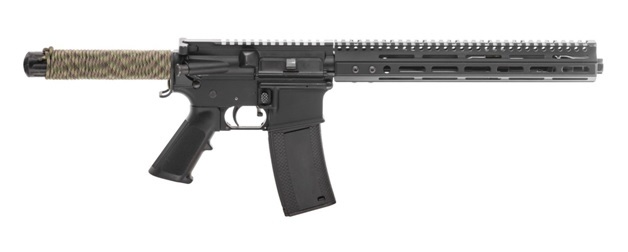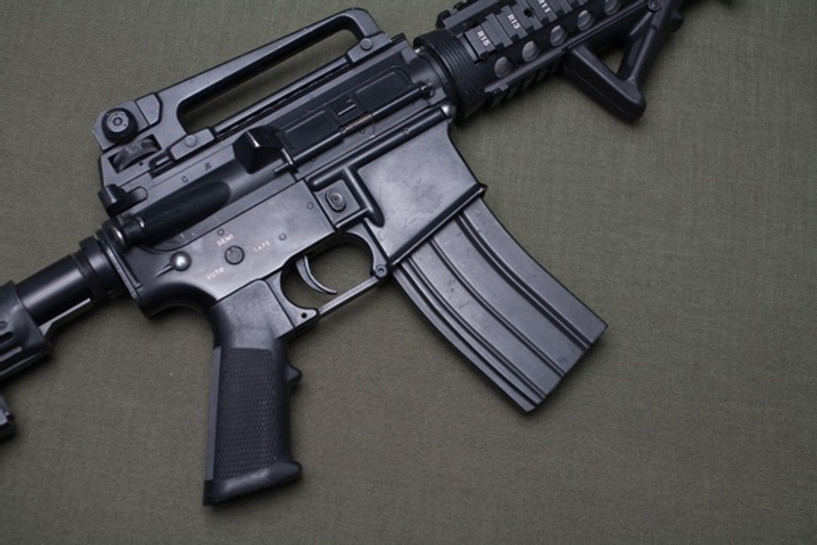While most shooters know what the functions of the trigger, gas system, and bolt carrier are, the buffer tube - and its internals - are a little less well-known. So let’s shed some light on the subject, especially since, if you want to build a rifle completely from the ground up, you will need to know what this part does.
What Is a Buffer Tube?
Simply put, a buffer tube is an aluminum tube that mounts to the rifle’s lower receiver and serves as an attachment point for either the stock or the pistol brace.
More importantly, the buffer tube houses the buffer weight and buffer spring. When you fire the rifle, the bolt carrier group’s lugs unlock, allowing the BCG to travel to the rear and into the buffer tube.
It then encounters the buffer weight, against which mass it competes, and the buffer spring, which will absorb much of the remaining force of recoil. When the spring compresses, it stores energy that it returns into the bolt carrier group, sending it back into battery.
In this capacity, the buffer spring serves as a recoil spring or return spring.
Does an AR-15 Need a Buffer Tube?
Without a buffer tube, you would have no way to attach a stock or an AR pistol brace. But more importantly, without the buffer system, the rifle would cease to function as a semi-automatic.
While you can still theoretically fire a rifle without a buffer system, the buffer spring is required to return the BCG to battery, enabling another shot to be fired. Without the buffer system, you would need to manually cycle the action for each shot via the charging handle/forward assist.
Also, both direct gas impingement and gas piston system-driven AR rifles require this buffer system to operate as intended - so yes, you need it.
What Size Buffer Tube Weight Do I Need?
The size buffer weight you need depends on the caliber of the rifle, the barrel length and gas system, and also partially on load data.
Generally, however, if we are talking about AR-15 rifles chambered in 5.56, you can just go about this by looking at barrel length.
If you have an AR with a barrel length of 18” or greater, then a standard or H1 buffer weight will probably work for you.
As you go shorter, a heavier weight is likely in order. For carbine-length rifles, an H1 buffer will probably suffice, but H2 might be needed if the rifle is suppressed.
If you go shorter, you might need a heavier weight yet. AR pistols with 10” to 12” barrels (or shorter) generally need either H2 or H3 buffer weights to cycle properly.
What Is the Difference Between H1, H2, and H3 Buffer Weights?
The difference between H1, H2, and H3 buffer tube weights has to do with mass. If you’re looking at an H1 buffer, it’s going to weigh 3.8 ounces.
An H2 buffer weight is slightly heavier, at 4.6 to 4.7 ounces, and a H3 weight heavier yet, at between 5.4 to 5.5 ounces.
As weight increases, so does reciprocating mass, so holding all other factors equal, a heavier weight (usually) results in lower felt recoil. With that said, you can’t just increase the buffer weight sight unseen as that can cause cycling issues.
What Does a Heavier Buffer Weight Do?
A heavier buffer weight helps fight back against the mass of the bolt carrier group as it moves through the buffer tube, so the heavier the buffer weight, the lower the felt recoil will be.
However, the buffer weight must be carefully matched to the rifle to ensure that it cycles smoothly, as a weight that’s too heavy may interfere with ejection and the resetting of the action.
What About Springs?
Generally, there are two main types of buffer springs, carbine springs and rifle springs. Carbine springs tend to be shorter to accommodate the shorter length carbine tubes - around 10” to 11.25”. Rifle length springs are longer, between 11.75” and 13.5”.
Also, there are springs of differing thicknesses, which can also help tailor action cycling and felt recoil - heavier springs reset faster, lighter springs more slowly.
What Is the Minimum Legal AR Length?

If it is a rifle, then it must have a barrel of 16” or greater, otherwise it will be considered a short-barreled rifle and will require an NFA tax stamp. As for AR pistols, they are basically AR-15 rifles without the stock; they tend to have barrels between 7” and 10”.
Looking for a New Buffer Tube or AR Pistol Brace?
MCS Gearup has both buffer tube systems, components, and AR pistol braces for your builds. Take a look through our full collection of AR parts and build kits and get in touch with us at Sales@MCSGearup.com if you have any questions.

